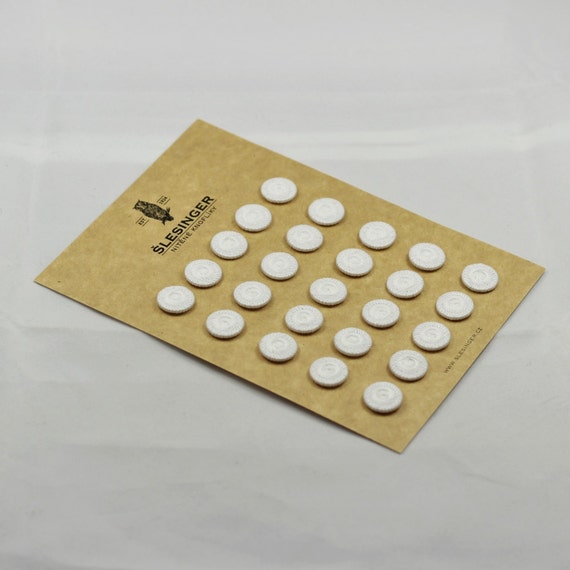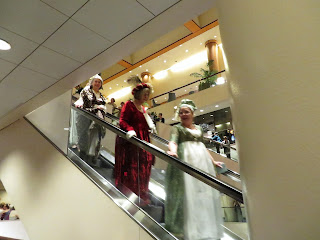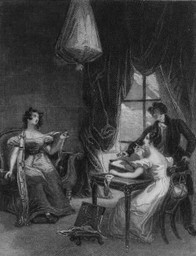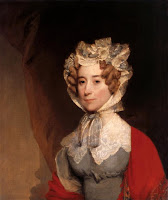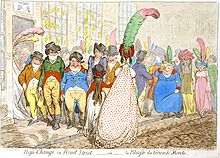JASNA AGM 2016
A Trip to JASNA AGM 2016 : Night 2
Saturday October 22: Banquet and Ball
After the breakout sessions, I returned "home" to my cousin's house to take a quick nap and get ready for the ball. I brought a costume with me. I could either afford a Regency era dress or the AGM but not both. Luckily, in my closet, I had a costume ready to go. A few years ago I purchased a boho style blouse and skirt at an Indian store nearby. The white embroidery on white cotton looked very much like a Georgian/Regency dress. I made it look more like a dress by adding a sky blue satin sash to match my reticule, shawl and ballet slipper shoes. I also replaced the modern plastic buttons with Dorset buttons from Etsy seller ASButtonsMarket. (I highly recommend these buttons. They're beautiful, well-made and really made the outfit look somewhat more authentic).
I worked hard to achieve some kind of Georgian/Regency ringlets in my hair, tied my turban over my head and headed out the door again.
I worked hard to achieve some kind of Georgian/Regency ringlets in my hair, tied my turban over my head and headed out the door again.
I took the public stage, otherwise known as the city bus, all the way across the city. As a consequence, I missed the social hour and barely had time to take off my modern shoes and outerwear and finish dressing for the banquet and ball.
The banquet wasn't quite what I had expected. It felt very rushed and there wasn't much time to socialize. It felt a lot like a wedding. Being the world's pickiest eater over the age of 6, I had the children's meal of chicken fingers. They were OK but not great. Dessert was a sweet little apple tart in a graham crust with crumble topping. It tasted nice and was very seasonal but a little disappointing because it was something I could have made myself with some effort. With 850 Janeites and their companions, it was difficult to see or talk to many people.
I sat with some strangers who were quite nice. The lady next to me was from Madison, Wisconsin and I told her how much I love looking at their historical society's website. I wish I could get a job there! She said there are a lot of young(er) adults just out of library school like myself competing for very few jobs in that area. She told me about some other special libraries she had visited like the Budweiser archive. Who knew there was such a thing? Too bad I don't drink beer! It did expand my knowledge of special libraries and where to look for jobs. Next to her was a fellow New Englander and librarian who went all the way to Illinois for library school. On the other side of the librarian was a name I recognized - Janet Mullany. I've only read one of her books, The Rules of Gentility, and found it very funny; and one of her short stories in Jane Austen Made Me Do It. I didn't have a chance to talk to her though.
After the banquet I joined in the promenade around the hotel lobby. We went up the escalator, around the first floor; up the next escalator and around the main lobby; down and around again. I saw some very lovely costumes and wanted pictures so I dropped out of the promenade after two trips around to photograph the other participants. The gentlemen looked very nice indeed!
While the ballroom was getting set up I attended a panel discussion on Jane Austen Around the World. The speakers were Susannah Fullerton of JASA (Australia), Claire Bellanti, (JASNA), Maureen Stiller from the Jane Austen Society (UK), Adriana Sales Zardini of JASBRA (Brazil) and Laaleen Sukhera-Khan of Jane Austen Pakistan; moderated by Joan Ray.
The last two societies are quite new but very popular. The Jane Austen Society of Pakistan has a large Facebook group with occasional meetings for tea. Jane Austen's world feels very familiar to them, Pakistan being a former British colony. In contrast, Adriana had a difficult time translating Mansfield Park and Sense and Sensibility into Portuguese. In Portuguese they have only one word for carriage, but Jane Austen's text is so nuanced, the type of carriage named represents the social status and character of the owner. She consulted Spanish and Italian translations for assistance. I wonder if Jane Austen ever considered that people would be reading her novels in a time and place where the rules of society and pop culture references would be foreign to readers?
The panel discussed patriarchy and Jane Austen readers. It was a difficult question to answer. Susannah Fullerton noted that her native New Zealand was the first country to allow women the vote and female readers there identify with Lizzie Bennet's independent spirit! There were a number of gentlemen in attendance and not just as companions. It seems more acceptable for men to read Jane Austen now. Sadly, Susannah Fullerton's sons don't share the love but they are fully well aware of their mother's work. She shared a funny anecdote about when her son was small, he had a friend over to work on a project. They needed the dining room table so her son told his friend they had to clear off his mother's Jane Austen stuff first. "Who's Jane Austen?" the friend replied. The son responded incredulously "You don't know who Jane Austen is?!"
I peeked in the ball as the dancing was getting started. I've seen and tried Regency dancing and it's not easy.
Health issues prevent me from trying to dance so I retreated to the card room upstairs. I met some nice ladies and together we learned to play four-handed whist, with special Jane Austen cards, of course. They also had instructions for piquet, lottery fish, backgammon and outside in the lobby area, an ongoing Jane Austen puzzle. See more pictures of the games.
Just as I was winning the card game, my too-modern phone rang with my ride announcing their arrival. Like Cinderella, I had to make a hasty early exit. I had just enough time at the ball to keep me from being bored. I was exhausted and ready to go to bed.


